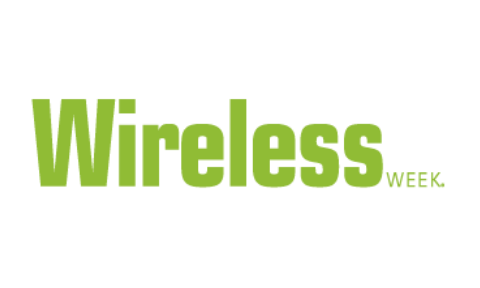Moving to next-generation messaging services seems like a logical step in the ongoing evolution of wireless technology, but it appears that some operators are leaving the transition on the back burner.
Damian Sazama, vice president of marketing at Interop, says regional providers have put the move to Rich Communications Suite (RCS) products on hold because the technology requires the installation of an IMS core – a costly, complex undertaking. And with many mid-tier companies in the midst of LTE deployments, RCS has been moved even further down the priorities list.
The lack of RCS means smaller operators have one less tool to compete against the likes of AT&T and Verizon Wireless, both of whom have IMS cores that allow them to deploy both voice-over-LTE and RCS.
Sazama recently spoke with Wireless Week about Interop’s solution for this issue: technology that allows operators to roll out RCS without an IMS core. The company has also come out with a program that lets companies take the service for a test drive before they commit to a deployment.
This is an edited transcript of their discussion.
Wireless Week: Interop came out with its Load-N-Go program earlier this month. From what I understand, it basically allows operators to take RCS on a test drive before they commit to an actual deployment. I'm curious about Interop's strategy with the Load-N-Go program, since it seems to be aimed at helping operators get over cold feet when it comes to going full-bore with RCS.
Damian Sazama: It’s more what we can do to increase awareness of what RCS can do and put some of the functionality in operators’ hands to show them how it really looks and feels. We take an IMS-less approach so operators don’t need an
IMS core to provide true RCS. The Load-N-Go program is a way to show operators that whether or not they have an IMS core, they can use RCS today. They don’t have to wait for their IMS core to be deployed. Because a lot of the OEMs are looking at deploying their own clients on handsets, our RCS solution is client agnostic. The way we designed the program, we approve operators into the demo and they simply download a client. It’s a way that we can allow our customers around the world to try it out, put it in the hands of their marketing people and technical people. That way they can use the services and see how the functionality looks and feels.
WW: So from what I understand, the impetus behind the program wasn’t to address operators’ hesitation to deploy RCS so much as it was just about making it easier for them to roll out the technology?
I also don’t think there is a great awareness of RCS with a lot of the tier two and tier three operators Interop works with. They’re all busy with the transition to LTE and have a lot on their plate. We’re trying to show them that bringing this new messaging functionality to their customers today does not require a big, complicated rollout.
WW: So who are your target customers for this? Operators like AT&T, Verizon Wireless and Sprint already have IMS cores, so I was thinking you’d be targeting some of the smaller guys.
Sazama: Exactly. And some of them have quite honestly already settled on an RCS solution. Our target is our core competency, which is tier two and tier three audiences in the United States. We’ll also be using our channel relationships to offer our RCS globally. We’re already involved in several RFP’s (requests for proposals), and are scheduled to be doing a trial with our RCS platform.
WW: I wanted to clarify what sort of services are enabled by your RCS program, and was wondering if it included VoLTE, since I’m under the impression that in order to do voice over LTE you need an IMS core.
Sazama: You do need an IMS core to do the VoLTE part. Interop will be delivering the VoLTE functionality that’s part of the RCS specification with one of our partners.
WW: RCS is often touted as a solution to competition from over-the-top services, but at the time it’s been slow to come to market. With some subscribers already using products from third party providers, is it too late to turn the tide in favor of wireless providers’ own solutions?
Sazama: RCS is operators’ response to OTT. The OTT threat becomes a different level of threat depending on what market you’re in. If you’re on an unlimited plan, the OTT threat is not as great, since customers aren’t going to run out and drop their unlimited texting plan. Where OTT is really going to be the biggest threat is in parts of the world where unlimited plans aren’t as prevalent, where you still see a lot of pay as you go messaging - areas like Latin America. That’s where a free OTT app could really have a big impact on revenue.
Now OTT or not, I think consumers still expect wireless operators to bring out new services. That’s one of the things that RCS is, advanced messaging. It brings new bells and whistles that straight texts and picture messaging don’t have.
The other part of your question: Is it too little, too late? I don’t think so. The one thing those OTT offerings can’t give you is interoperability. Every morning, I boot up my computer and I have to sign in to Windows Messaging, Skype, and all those different IMs because I have different contacts using different applications. It’s the same thing with these OTT apps. There’s no interoperability between them. What true RCS does is bring that interoperability. True RCS steps down to legacy messaging, so if you’re not a RCS user and I am, I can still message you on my RCS phone. I don’t need to know whether you’re on a certain app or not. Interoperability is what made text messaging such a success in my mind. All you need to know is a subscriber’s telephone number. You don’t need to know what carrier they’re on or what application they’re using, and that’s truly what full RCS brings when you’re following the spec, it can step down to legacy messaging so you don’t need to know whether you’re on RCS or not.
WW: What's so compelling about RCS that you think consumers will pick a carrier-provided RCS technology over an OTT service that they might already be using?
Sazama: The main reason is my last answer, because of the interoperability. You don’t need to know if the other person is on RCS. You’re going to get the true RCS functionality, you’ll be able to see in your enhanced address book if your other contacts are on RCS, and if they’re not you can still message them using legacy messaging. So I think that is why true RCS is going to be more compelling than these OTT apps.
WW: I was interested to see in your announcement that your RCS Messaging Server can be put into place with or without an IMS core, allowing it to be used on both 3G and LTE networks. What sort of demand have you seen for RCS implementations on 3G, versus customer interest for RCS on LTE?
Sazama: We service a lot of customers on the 3G model that are still in transition to LTE. We wanted to make sure we could accommodate them. We did a lot of research on IMS, and we knew that they were very expensive and somewhat complicated to deploy. We felt that if your solution required an IMS core, we were looking at deployments that would have to wait until the middle of 2013. Without requiring an IMS core, we can deliver this to operators today, and assure them that when their IMS core is implemented and ready to go, they can integrate with that. It was really a strategic move by Interop to bring the product to market earlier than the carriers had their IMS cores ready.
WW: I’d like to get your take on the state of the market. Now that an increasing number of operators have gone live with LTE, RCS and VoLTE are logical next steps. When do you expect to see an uptick in RCS/VoLTE deployments?
Sazama: I truly feel it will be the early half of 2013 before you see full-bore RCS, VoLTE commercial deployments. What you’ll see in the remainder of 2012 is a lot of trials going on. I think you’ll see the majority of the commercial deployments starting in 2013.
WW: How big of a differentiator do you think RCS is going to be for the tier two and tier three operators you specialize in? They’re always looking for new ways to compete against the big guys, and I’m interested in how you see that factoring in here.
Sazama: You’ve seen all the press about tier two and tier three operators launching the iPhone. I think it’s critical they have access to the same services the tier ones can provide, so they can go to their customers and say,” I’m a rural operator, I’m a tier two operator. And I can offer the same services as tier one operators.” It’s critical that they’re looking at these services because we know that tier ones are going to be deploying them, and their customers will get to enjoy the enhanced messaging experience. The tier two and tier three operators will need to follow.
Download the full article
(this article was originally published in Wireless Week, written by Maisie Ramsay)





